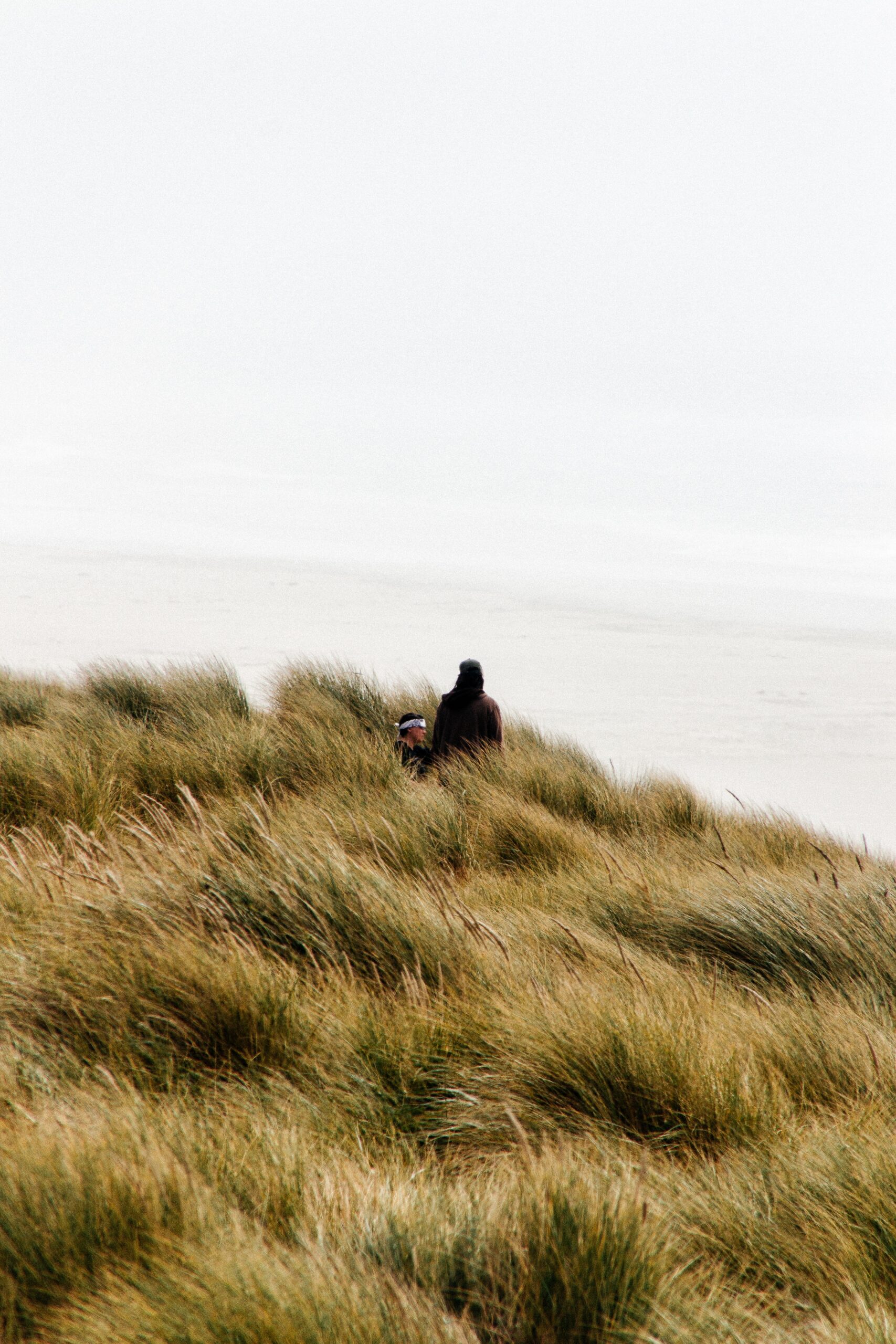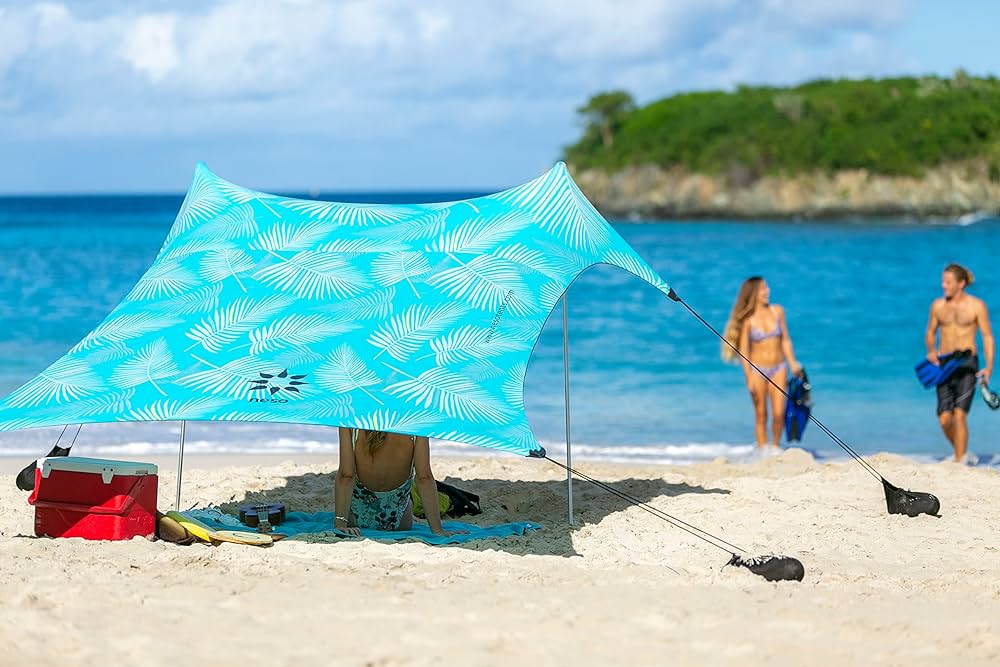Imagine you’re on a beautiful sandy beach, with the salty ocean breeze kissing your skin, and you’ve just arrived with your brand new Neso Tent. As you eagerly unpack it, you can’t help but feel a twinge of nervousness about setting it up in windy conditions. But fear not, because in this article, you’ll discover foolproof tips and techniques on how to easily set up your Neso Tent in windy conditions, ensuring that you can enjoy your beach day, no matter what Mother Nature throws your way.

Choosing the Right Location
Considering the Wind Direction
When setting up your Neso Tent in windy conditions, it is crucial to consider the wind direction. Take a moment to observe which way the wind is blowing before choosing a location for your tent. Placing the tent in a position where the wind will hit it head-on can lead to instability and potential damage. Opt for a spot where the wind will strike the sides of the tent, providing a more secure setup.
Finding a Sheltered Spot
In addition to taking wind direction into account, finding a sheltered spot can significantly enhance the stability of your Neso Tent. Look for natural features such as trees, hills, or rock formations that can act as a windbreak and provide protection for your tent. These features will help reduce the impact of strong gusts and create a more comfortable camping experience.
Checking Ground Conditions
Before setting up your Neso Tent, it is essential to inspect the ground conditions of your chosen location. Look for a flat and even surface free from rocks, roots, or any potential hazards that may damage the tent fabric or cause discomfort during your camping trip. Ensuring a stable foundation will help with the overall stability and longevity of your tent.
Preparing the Tent
Inspecting the Tent
Before assembling your Neso Tent, take a few moments to inspect the tent itself. Check for any tears, rips, or damaged components. It is crucial to identify any issues before setting up the tent, as strong winds can worsen existing damage. If you notice any problems, such as a torn fabric or broken poles, it is best to address them before proceeding with the setup.
Assembling the Tent Poles
To ensure a smooth setup, properly assemble the tent poles according to the manufacturer’s instructions. Begin by identifying the correct poles for each section of the tent. Carefully slide the individual sections together, making sure they securely lock into place. Take your time and double-check that all sections are correctly assembled to guarantee stability.
Attaching the Tent Stakes
Attaching the tent stakes is an essential step in preparing your Neso Tent. Start by inserting the stakes into the designated loops or grommets on the tent corners. Firmly push the stakes into the ground, ensuring they are placed at an angle away from the tent. This angle will help resist strong winds and increase the overall stability of the tent.


Securing the Tent
Using Sandbags or Heavy Objects
To provide additional stability and secure your Neso Tent, consider using sandbags or heavy objects. Fill sandbags with sand or use pre-filled sandbags and place them strategically around the tent’s base. Alternatively, you can use heavy objects such as rocks or logs to anchor the tent and prevent it from being blown away by strong gusts of wind.
Using Anchor Stakes
Anchor stakes are another excellent option for securing your Neso Tent. Anchor stakes are designed to offer maximum stability and are particularly effective in windy conditions. Insert the anchor stakes into the ground at an angle, ensuring they are securely fastened to the tent corners. The deeper they are anchored, the better they will withstand strong winds.
Adding Extra Weight
In situations where sandbags or anchor stakes are not available, adding extra weight to the tent can provide some temporary stability. You can use items such as large water bottles or filled backpacks to weigh down the tent corners. While this method may not be as effective as sandbags or anchor stakes, it can still help prevent the tent from being easily blown away.
Deploying the Tent
Unfolding the Tent
Once you have chosen the right location and prepared the tent, it’s time to deploy it. Begin by unfolding the tent fabric, ensuring it is spread out evenly. Take your time to avoid any tangles or twists in the fabric, as this can affect the stability of the tent. Smooth out any wrinkles or folds to create a taut and secure surface for the tent.
Stretching Out the Tent
To maximize the stability of your Neso Tent, stretch out the fabric to its full extent. By creating tension in the fabric, you minimize the risk of flapping or billowing during strong winds. Walk around the perimeter of the tent, gently pulling on the edges to tighten the fabric. Ensure that the tent is evenly stretched from all sides for optimal stability.
Extending the Poles
Extend the assembled tent poles by carefully lifting them into an upright position. Start with one end of the tent and gradually move to the other, extending the poles section by section. Secure each pole in place by fastening the connectors or sleeves provided. Double-check that all poles are properly extended and securely connected to ensure the stability of your tent in windy conditions.

Securing the Tent Fabric
Attaching the Guy Lines
Attaching guy lines to your Neso Tent is a vital step in enhancing its stability. Guy lines are additional ropes that add tension and support to the tent structure. Begin by locating the designated attachment points on the tent corners. Securely tie the guy lines to these points, extending them outwards and away from the tent. Choose anchor points such as trees or sturdy stakes to secure the guy lines, providing extra stability even in strong winds.
Adjusting the Tension
Once the guy lines are attached, adjust their tension to provide optimal stability for your Neso Tent. Ensure that the lines are neither too loose nor too tight. Loose lines may result in a flimsy structure, while overly tight lines can place unnecessary stress on the tent fabric and poles. Regularly check and adjust the tension as needed to maintain a stable and secure setup.
Tying Knots Properly
Properly tying knots is essential to prevent the guy lines from coming loose or slipping during windy conditions. Use reliable and secure knots, such as the bowline knot or the taut-line hitch. Take the time to learn and practice these knots before your camping trip to ensure a stable and safe setup. Well-tied knots will keep the guy lines taut and effectively contribute to the overall stability of the tent.
Protecting the Tent
Using Windbreakers
If you anticipate strong winds during your camping trip, utilizing windbreakers can offer additional protection for your Neso Tent. Windbreakers are barriers that help redirect or block the wind away from the tent. You can use items such as tarps, additional tents, or even parked vehicles strategically placed to create a shield against the wind. This added layer of protection can significantly improve the stability of your tent.
Creating Wind Shields
In addition to windbreakers, creating wind shields around your Neso Tent can further safeguard it from strong gusts. Use natural resources such as rocks, logs, or sandbags to build a barrier around the tent. Arrange them in a way that deflects the wind and creates a buffer zone, reducing its impact on the tent structure. Be mindful of not obstructing the ventilation of the tent while setting up these wind shields.
Reinforcing Tent Poles
Reinforcing the tent poles is another effective method to protect your Neso Tent from wind damage. Use additional bracing or support structures to provide extra stability to the poles. This can include securing the pole attachments with guy lines, adding cross-rods between the poles, or utilizing supplementary poles to strengthen the tent’s frame. By reinforcing the poles, you enhance the overall strength and durability of the tent.

Monitoring and Adjusting
Regularly Checking and Tightening
Throughout your camping trip, it is essential to regularly check the stability of your Neso Tent and make any necessary adjustments. Strong winds can potentially loosen stakes, guy lines, or tent poles, compromising the stability of your shelter. Take a few moments each day to walk around the tent, check for signs of damage, and tighten any loose components to maintain a secure setup.
Repositioning the Tent
If you notice that the wind direction has changed or intensified, it may be necessary to reposition your Neso Tent. Assess whether the current location is still providing adequate wind protection or if another spot nearby would offer better stability. Moving the tent to a more sheltered area may help minimize the impact of the wind and ensure the safety of your camping setup.
Reevaluating the Setup
As conditions evolve, continue to reevaluate the setup of your Neso Tent. Stay vigilant and monitor changes in wind patterns, weather forecasts, and the overall condition of your tent. If necessary, make further adjustments or modifications to maximize the stability of your setup. Flexibility and adaptability are key when camping in windy conditions to ensure a safe and enjoyable experience.
Taking Down the Tent
Removing the Anchor Stakes
When it is time to pack up and leave, start by removing the anchor stakes from the ground. Carefully pull them out at an angle, loosening the earth around them if needed. Place the anchor stakes in a safe and designated location, ensuring they are clean and free from debris. Properly storing the stakes will ensure that they are ready for future use and maintain their effectiveness.
Loosening the Guy Lines
Once the anchor stakes are removed, proceed to loosen the guy lines attached to your Neso Tent. Untie the knots and gently release the tension, allowing the fabric to relax. Take care while handling the lines, as they may be tangled or twisted due to wind conditions during your camping trip. Straighten them out and coil them neatly to avoid any entanglements or damage.
Folding and Packing the Tent
To properly store your Neso Tent, fold the fabric neatly and tightly. Follow the manufacturer’s instructions to ensure a compact and uniform fold, minimizing the storage space required. Avoid any sharp creases or folds that may weaken the fabric over time. Once folded, pack the tent in its designated storage bag or container, ensuring it is protected from dirt and moisture until your next adventure.
Understanding Tent Specifications
Weight and Durability
When selecting a tent, it is essential to consider its weight and durability. Lightweight tents are easier to transport and set up, but they may be less resistant to strong winds. Opt for a tent that strikes a balance between weight and durability, ensuring it can withstand the wind conditions you are likely to encounter while camping.
Wind Resistance Ratings
Tent manufacturers often provide wind resistance ratings, indicating how well a tent can withstand varying wind speeds. These ratings can help you assess the suitability of a tent for windy conditions. Look for tents with higher wind resistance ratings, as they are designed to handle stronger winds and offer increased stability.
Stability Features
Many tents come equipped with additional stability features to enhance their performance in windy conditions. These features may include reinforced poles, sturdy frames, or multiple anchor points. Prioritize tents with such stability features when camping in areas prone to high winds. These features will contribute to a more secure tent setup and provide greater peace of mind during your outdoor adventures.
Tips and Tricks
Practice in Calm Conditions
Before embarking on your camping trip, take the time to practice setting up your Neso Tent in calm and favorable weather conditions. Familiarizing yourself with the setup process will help you feel more confident and efficient. Practice assembling the tent, attaching the guy lines, and securing it against potential wind disturbances. This preparation will save time and make setting up in windy conditions much smoother.
Use Additional Supports if Available
If available, utilize any additional supports or accessories designed specifically for your Neso Tent. Manufacturers often offer optional attachments such as extra guy lines, stakes, or poles. These additional supports can further reinforce your tent’s stability and provide an added layer of protection against strong winds. Consider investing in these accessories to ensure a secure and reliable setup.
Seek Expert Advice or Demonstration
If you are uncertain about setting up your Neso Tent in windy conditions, do not hesitate to seek expert advice or demonstrations. Reach out to the tent manufacturer or consult experienced campers who have successfully set up tents in similar circumstances. Their knowledge and guidance will provide valuable insights and strategies to help you ensure a safe and stable campsite even in challenging wind conditions.
By following these comprehensive steps and taking the necessary precautions, you can confidently set up your Neso Tent in windy conditions. Remember to diligently monitor the stability of your tent, make adjustments as needed, and prioritize safety above all else. With the right location, proper preparation, and careful attention to detail, you can enjoy outdoor adventures while staying protected and comfortable in your Neso Tent. Happy camping!


